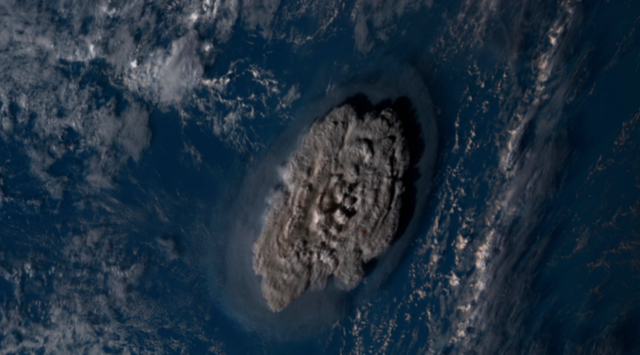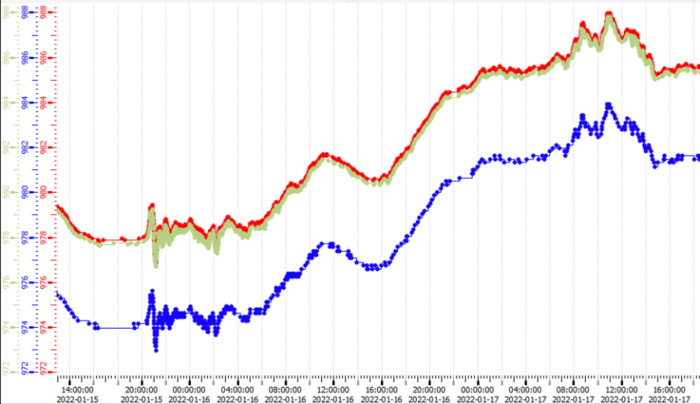
Hunga Tonga and Hunga Ha’apai are two twin volcanic islands in the Tonga Archipelago located in the South Pacific (20°32’45” S, 175°23’22” W). In 2009 an eruption made the two islands merge, but on January 15th, at 4:15 UTC, underwater volcano Hunga Tonga-Hunga Ha'apai generated a massive shock wave during a powerful eruption and separated the two islands again.
More than 15 hours later, the ALICE DCS sensors detected an anomalous oscillation in the atmospheric pressure, with an amplitude of 1.3 hPa, followed by several secondary waves. This event triggered alarms in several gas systems, including TPC and TRD, which struggled for hours to compensate for the perturbation.
Estimating Tonga to CERN distance to 17150 km, the pressure wave traveled for 15:15 hours (54900 s) before being detected in ALICE at 20:30 CET (19:30 UTC), giving an average speed of 312 m/s.
A second oscillation was observed at 01:00 UTC on January 16th, and it is compatible with the hypothesis of the same wave coming from the volcano in the opposite direction over a distance of about 22885 km (estimating the average Earth circumference to 40035 km), and traveling for 20:45 hours at an average speed of 306 m/s.

Finally, assuming that the first pressure wave completed a full turn (57185 km), a third oscillation was observed two days later, on Monday 17th at 7:45 UTC, after 51:30 hours (185400 s), and having traveled at an average speed of 308 m/s.
